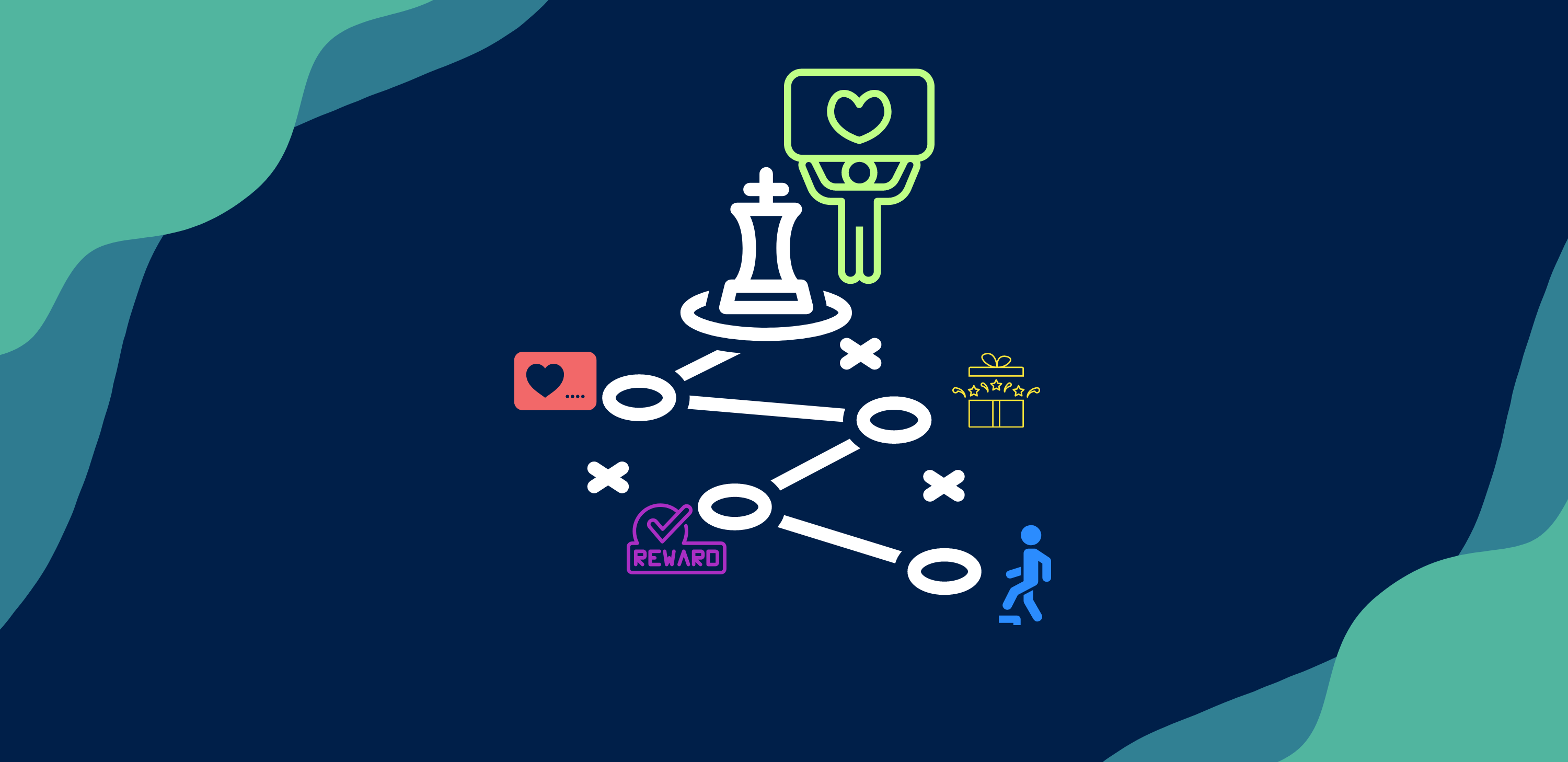How Quickly Can You Launch A Customer Loyalty Program?
Once companies decide to start pursuing a loyalty program, several questions begin to emerge: how much does it cost? What resources do we need? How...
Platforms
Services
Promotions
.
Featured Guide
Industries
Resources
Explore
5 min read
 Kimberly Lyons
10/01/20
Kimberly Lyons
10/01/20

In today's highly competitive markets, knowing what customers want and what matters to their decision-making can pay off enormously. Marketers turn to dedicated analytics tech and sales tools to understand their customers better.
It's the same situation for loyalty programs, which often face a constantly growing market of competing programs. From retail loyalty programs to B2B channel incentive programs, all industries are seeing an increase in the amount and types of customer rewards programs available as more companies focus on retention marketing.
To stand out and differentiate their loyalty programs, brands must understand what their customers want from loyalty programs: what perks they want or what features they want to see.
Loyalty platforms and programs are unique because loyalty programs serve both customers and companies. Both parties require specific features and want certain benefits from loyalty programs. For example, customers want to receive valuable rewards when they participate in a loyalty program, while companies want their program rewards to motivate customer actions and increase sales.
While customers and companies might have different desires and goals when it comes to their loyalty programs, there are times when the two sides overlap. Identifying those areas of overlap is important because it can show brands where to prioritize time and resources when optimizing the loyalty program experience for themselves and their customers. A better loyalty program experience nearly always leads to increased loyalty program ROI.
Here are three instances where the loyalty program features wanted by customers and companies overlap.
Digital device usage has reached unprecedented levels, with US adults spending an average of 8 hours and 14 minutes per day on digital media in 2022 (eMarketer, 2022). This consumption spans multiple platforms: 4.9 hours on mobile devices (App Annie), 2.5 hours on desktop/laptop (GlobalWebIndex), and 1.5 hours on tablets (Statista).
Consumer expectations have evolved accordingly. Research shows that 73% of shoppers use multiple channels during their purchase journey (Harvard Business Review), and 90% expect consistent interactions across channels (Salesforce). For loyalty programs specifically, 77% of consumers cite seamless cross-device accessibility as "very important" to program engagement (Bond Loyalty Report 2023).
Success metrics reinforce this trend: omnichannel customers spend 15-30% more than single-channel customers and demonstrate 30% higher lifetime value (McKinsey). Loyalty programs with integrated omnichannel experiences report 89% higher customer retention rates compared to single-channel programs (Forrester Research).
Program accessibility must extend across:
This integration isn't optional—it's a critical success factor in modern loyalty program design.
Similar to how customers use a high number of media and devices, companies utilize a multitude of technologies and tools to conduct daily tasks, sell new business, build new products, market to audiences, and protect information. Trying to implement a new loyalty program into an ever-evolving, expanding technology system can easily cause issues if done incorrectly.
Modern enterprises utilize an average of 976 distinct applications (Statista, 2023), with mid-sized companies managing 130-150 SaaS solutions (BetterCloud). This complex technology ecosystem demands seamless integration capabilities from loyalty platforms.
Key Integration Requirements:
Failed integrations carry significant costs:
Successful integration delivers:
Source: Gartner's Integration Success Metrics (2023), Forrester Wave Report: Customer Loyalty Solutions
Loyalty platforms must possess the ability and flexibility to easily integrate into a company's existing systems and processes. If not there's a risk businesses will fail to capture valuable customer data, experience communication breakdowns, or miss out on vital opportunities with their customers.
Points per dollar and discounts are foundational aspects of every loyalty program. But building real brand loyalty in the modern consumer requires that brands (and loyalty programs) go beyond the basics. If loyalty programs only offer generic treatment to customers, customers tend to react with apathetic consideration -- not loyalty.
However, adding personalization to key customer interactions improves a loyalty program’s appeal in the customer’s eyes. Unique member experiences, along with customized rewards or redemption offers, are the easiest ways to demonstrate customer appreciation on an individual level.
B2B customers especially consider loyalty programs more valuable when they receive specific, tailored rewards. They are also more likely to actively participate. Over time, higher engagement and personalized experiences help to build affinity between customer and brand. Eventually, customers begin associating their own identity with a specific brand or product, which is a hallmark of true loyalty.
It is hard to reach that level using only generic rewards.
To provide customers with personalized offers and rewards, companies need robust data analytics tools. Loyalty programs can capture valuable customer data from sources such as purchase & receipt uploads, loyalty member profiles, and reward redemptions. Companies need to be able to efficiently aggregate and analyze this loyalty program data to make strategic business decisions.
A platform with built-in analytics specifically intended for analyzing loyalty program data empowers brands to understand and utilize their collected customer data from launch day. Understanding areas such as loyalty program engagement or how specific customer segments react to promotional offers helps provide insights into what best incentivizes desired customer behavior and action.
Another vital feature is the ability to integrate loyalty program data into existing data analytics from other parts of a business. This gives a holistic view of how all brand activity is contributing to customer loyalty.
Customer concerns over data and privacy are greater today than they were just 5 years ago. And it’s not hard to understand why: there were more data breaches and compromises in 2023 than ever before that impacted over 353 million total victims.
The dramatic rise in hacks, lost data, and breaches makes data security a major consideration for the average consumer, no matter the industry or products. In addition, an increasing number of customers are now factoring data protection into how they select what brands to shop from, what activities to voluntarily participate in, and what platforms they’ll use.
To stay relevant, loyalty programs need to acknowledge and match the expectations of their users. Brands have to make data security a priority when creating a loyalty program or selecting a loyalty platform provider. A cyber attack or data breach often results in the loss of consumer trust and business, and recovering is costly.
When faced with the loss and churn of valuable customers, companies are investing to make their technology secure. Loyalty platforms that store personally identifiable information and customer data should ensure the data is encrypted.
Brands should also take steps to ensure any data acquired through loyalty programs is only used for specific, documented purposes. Utilizing a loyalty platform with the proper technical safeguards and ensuring all privacy compliance needs are being met is vital to long-term loyalty success. Brands will also benefit by building credibility among current and potential loyalty program members.
*This blog was originally published in 2020 and was edited and updated in February 2025.
Understanding how a customer's wants or needs coincide with your brand goals can help build an engaging and successful loyalty program. This is why at Brandmovers we incorporate strategic discovery and learning sessions to identify alignment opportunities before platform build even begins.

Once companies decide to start pursuing a loyalty program, several questions begin to emerge: how much does it cost? What resources do we need? How...

Whether rewarding users for updating their profile, completing training courses, or selling a product - loyalty program efficacy is only as good as...

Once you’ve decided to start a loyalty program, the next step is usually determining how to go about doing so. One option is to build and run your...